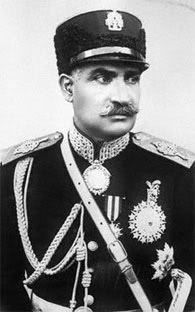Ardeshir XI of Parthia

| |
|---|---|
| Sucession | 72nd Shahanshah of Parthia |
| Reign: | 2nd February, 1950 - 30th July, 1979 |
| Predecessor: | Shahanshah Narseh III |
| Successor: | Shahanshah Khosru III |
| Birthdate | 30th March, 1914 |
| Place of Birth: | Tehran, Parthia |
| Marriages | Shahbanu Anahita Sardarizadeh |
| Languages spoken | Persian, English, Avestan, French |
Shah Ardeshir Narseh Bahram Sassani 30th March, 1914 – 30th July, [[Wikipedia:1979|1979, styled His Imperial Majesty, Shahanshah Aryamehr Mazdayasni (King of Kings, Light of the Aryans, Worshipper of Ahura Mazda), is the previous Shah of Persia.
Contents
Youth, Education, and Family Background
Ardeshir Narseh Bahram Sassani was born to Shahanshah Narseh III and his favorite of ten wives, Soraya Golzari, his family was large, with 25 half siblings from the other nine wives of the Shah, and three full sisters from his mother. Unlike his siblings, he was groomed for the throne, recieving education from a series of European and American tutors, before going off to school first at Institute Le Rosey, and then the Sorbonne.
In his days as Crown Prince when he returned to Parthia, he was known for being a vigorous supporter of reform, often advising his father on Western models and methods, but was continuously annoyed by the noncompliance of the Majlis to willingly accept the Shah's plans. When Narseh III died in 1950, Ardeshir was crowned as Shahanshah Ardeshir XI, and began to put his plans into action
From Constitutional to Absolute Monarchy
In the opening days of his reign, the Shah issued a decree, which the 1906 Constitution had permitted him to do, declaring the Shah had the authority to force Parliament to pass a law on pain of dissolution and early elections. When the Parliament protested, the Shah threatened to launch a coup, which forced the Parliament to back down. In 1954, Social Democratic and Leftist Parties gained a small majority in the Parliament, causing the Shah to intiate a coup. Military units quickly seized the Parliament Building, arresting the Leftist congressmen for treason, and executing them within 6 hours. Protests broke out in Persepolis, which the Shah responded to by rolling tanks on demonstrators and opening fire upon crowds of protestors. Military units moved through cities in conjunction with royalist citizens, arresting leftists and democrats en masse, then executing the vast majority. Special military units were also created, designed to extract information, they had recieved some secret training from ex-German intelligence and Gestapo agents who had fled to Parthia after World War II. These units, set upon the Leftists, were organized under the name of the Organization for Intelligence and National Security (in Persian Sazeman-e Ettelaat va Amniyat-e Keshvar, or SAVAK), they were the forerunners of the modern incarnation of SAVAK, designed to oppress and terrorize enemies of the Parthian monarchy. Within a few weeks, the protests had died down, and thousands, if not hundreds of thousands, were dead. Continuing with his campaigns of political oppression, the Shah shut down all political parties, centralized all power in the national government, and abolished the constitution, ruling entirely by decree. By 1958, there were few protests, and by 1960, with an increasingly strong economy, few besides the Tudeh complained of the Shah's absolute rule.
Operation Yazdegird
One of the most controversial acts of the Shah was undertaken in 1955, when protests against the Shah's absolutism and oppression still occurred. Ethnic revolts by the Ahwazi Arabs erupted, resulting in the Shah declaring a simple order: that no Arab would ever be welcome in Parthia again. A military operation quickly started, seizing Khuzestan along the Iraq border, then pushing the entire population of Arabs north-westward, creating a stream of refugees which were slowly hunted down while death squads annihilated the Arabs who did not flee. Finally, the remaining mass of people were forced into the Dasht-e Kavir, which Parthian forces surrounded, preventing the Arabs from escaping. There, the extremely xeric climate slowly murdered the Arabs, where, trapped in the desert, they were forced to dehydrate, until every Arab in Parthian territory was annihilated.
In the end, the entire population of Arabs in Parthia, 2.5 million people, was utterly annihilated. Only the 120,000 who escaped to Iraq or Kuwait was saved, while the bones of the rest littered the Dasht-e Kavir.
